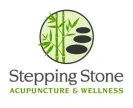![]()
This post is copied from our older, original blog. Original post date 12/27/2011.
By Marcie Bower, Lic.Ac.
As our patients know, we like to use any and all adjunctive techniques available to us in our treatments as acupuncturists. For adult patients, we always use acupuncture needles, but we often also use one of Traditional Chinese Medicine’s adjunctive therapies, such as moxabustion, cupping, or gua sha.
Gua sha, which literally translates as “Scraping Sand” refers to scraping the skin with a rounded surface to create transient (temporary) therapeutic petechiae (red marks). Clinically, the most common device used to perform gwa sha treatments is a specialized spoon that looks like a Chinese soup spoon. The acupuncturist scrapes along certain channels on the skin with the edge of the spoon – if the treatment is indicated, tiny small raised red dots appear along the affected area of the skin. The treatment draws out metabolic waste and toxins that are congesting the area, leading to more normal circulation of blood and nutrients in the body. From a TCM perspective, the treatment alleviates stagnation of qi (energy) or blood in the body. It also releases toxins that have built up in the channels or the muscles, allows pathogenic heat to vent from the surface of the body, and promotes the healthy flow of energy through the meridians and fascia. It can also be used to manually break up scar tissue in cases of chronic musculoskeletal pain or inflammation.
In our clinic, we most commonly use gua sha for the following kinds of symptoms:
* along the affected muscles and tendons to treat pain and inflammation in chronic tendonitis.
* along the channels of the upper back (over the lungs) to prevent or treat the common cold
* along the channels of the upper back (over the lungs) in cases of chronic respiratory infections or chronic cough
* along the channels of the upper back, neck, and shoulder to relieve muscle tension and tightness
* along the channels of the mid and low back to treat acute mid or low back strain
* between the ribs to treat intercostal pain or problems with breathing
* along the channels on the neck and shoulders that lead to the ear to treat acute hearing loss or ear pain
The marks left on the skin from gua sha treatments fade in a few days, and are an important part of the effectiveness of the treatment itself.
For more on this topic, we recommend “Gua Sha, a traditional technique for modern practice” by Arya Nielson.

